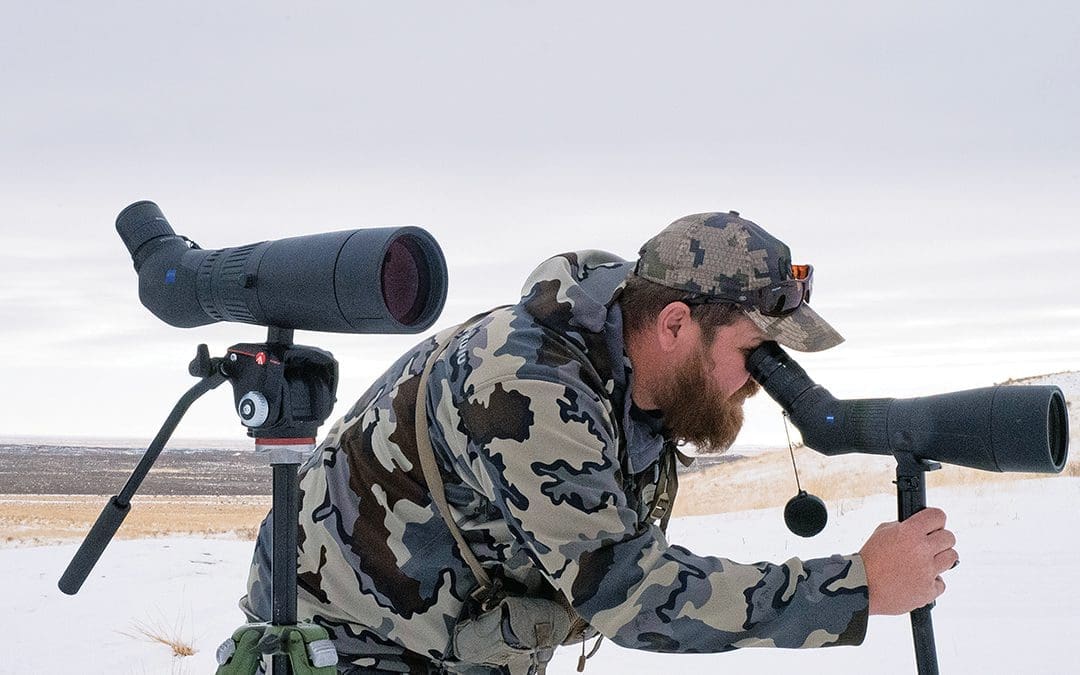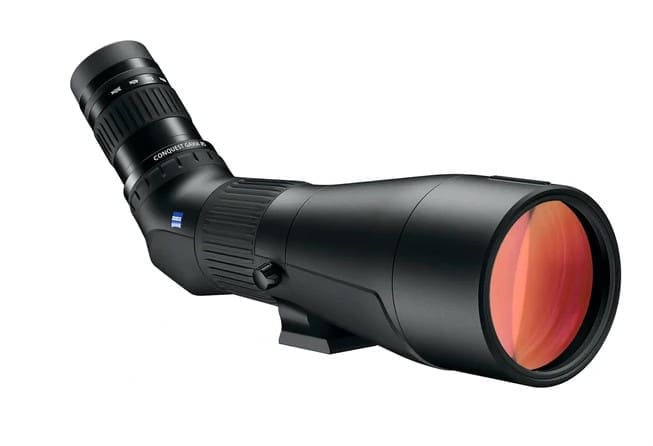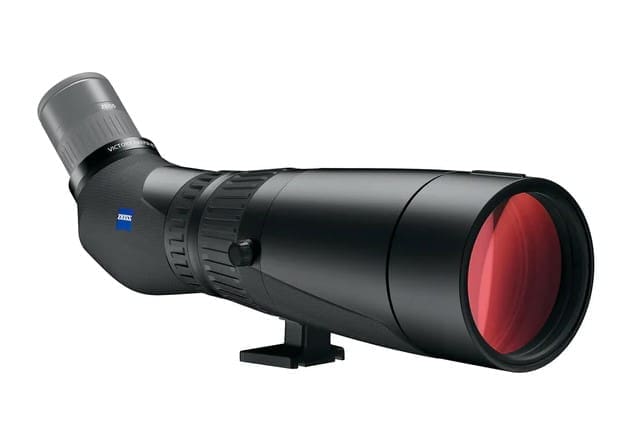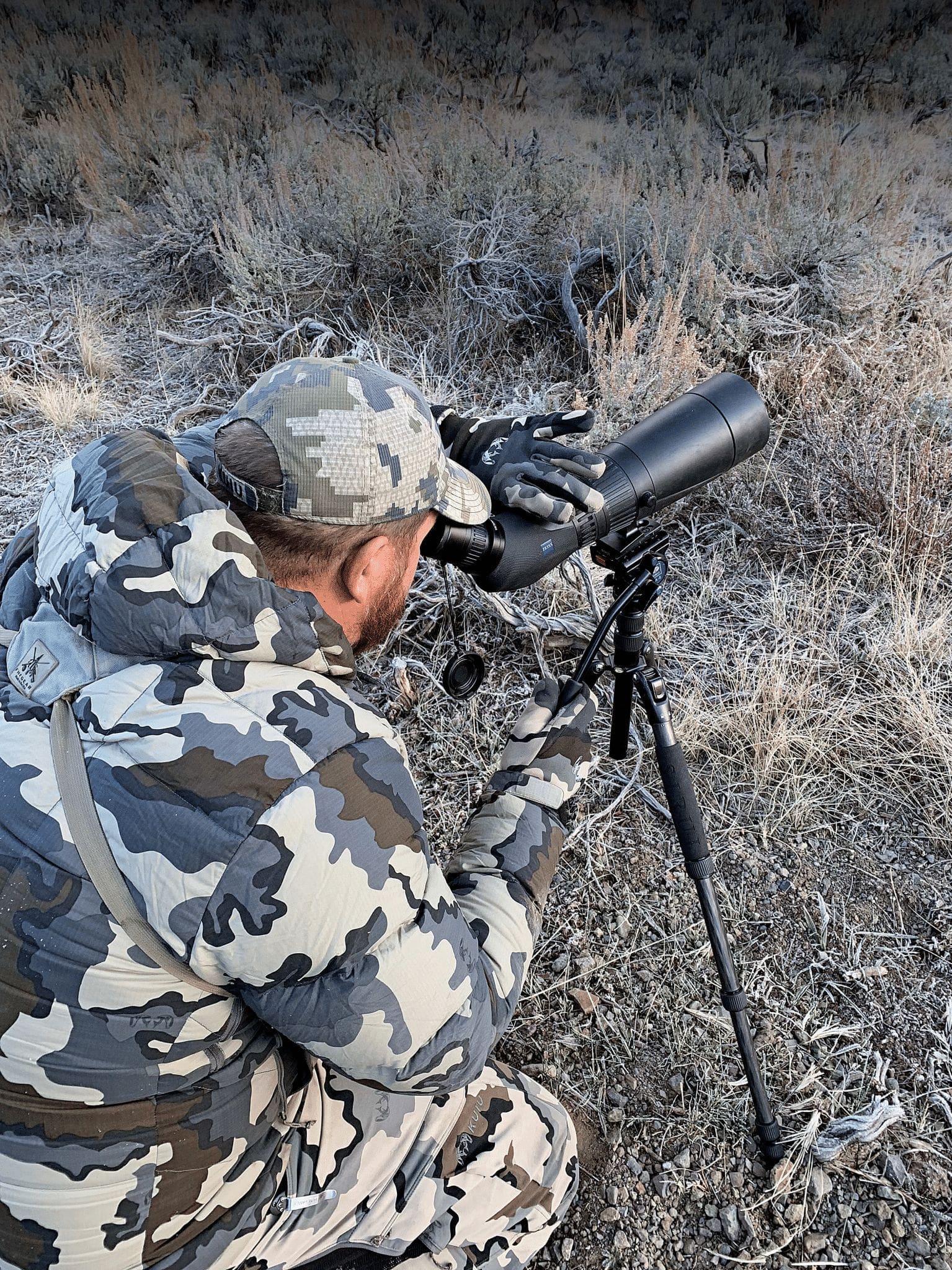
NOTICE: Certain links on this post may earn a commission for Western Hunter Magazine from Amazon or our other affiliate partners when you make a purchase. Thank you for your support.
Zeiss Spotting Scopes Comparison
Last fall I had the opportunity to test out two Zeiss spotting scopes, the Victory Harpia 85 ($4600) and Conquest Gavia 85 ($1999). Obviously, the price point on these optics are quite different, but knowing the Zeiss name, I planned on both being great products. I was excited to put them through their paces and see what each had to offer.
Appearance - First Impressions
The first thing that was obvious about both Zeiss spotting scopes was their great rubber-armored finish. The armor not only has a nice feel to it but does a superb job of protecting the glass. This is a huge bonus when making investments in things like high-end optics. Both Zeiss spotting scopes have a standard push-on cup cover over the eyepiece, as well as a very functional end cap that snaps in tightly. Both models have aiming marks on the end of the scope, which can be helpful when using an angled spotter. The last neat feature is that both Zeiss spotting scopes can mount directly into the popular Manfrotto head without the use of a base plate, which is nice for those who use this system. For those who use other tripods, they can simply attach whatever base plate they choose.
Size
The Gavia 85 is made with a magnesium body and has a compact footprint for being an 85mm spotter. At a very nice size of 15.5” long and weighing 60 ounces, I could easily fit it into the spotter compartment on my backpack and it did not feel like I was carrying an 85mm optic. After carrying the Gavia on a backpacking trip for mule deer this fall, I felt size-wise it was right where I wanted it for the type of tool I had in the backcountry.

The Harpia 85, although not significantly bigger on paper, is noticeably larger. The Harpia measures right at 16.75” and weighs 68.2 ounces. The scope is also quite a bit bulkier in the body than the Gavia. This is likely due to the integrated power adjustment located in the body rather than the eyepiece. I will explain this further in other sections. This is a bigger scope than I would personally want to carry on a backcountry hunt, but some would probably find the advantages to be worth it. The Harpia did fit in the scope pouch on my Kuiu Icon Pro 3200 pack but was definitely tight compared to the Gavia.
Power
The Gavia 85 power adjustment is on the eyepiece like that of most standard spotters. Adjustment is firm but turns easily enough that you can remain on your subject while increasing or decreasing power. Power on the Gavia adjusts from 30x to 60x, which is a great range for the size of this scope in my opinion.
This is where things get interesting. The Harpia scopes have the power adjustment in the objective body of the scope rather than on the eyepiece as we are accustomed to on spotters. This gives you a wider angle while you are zooming with a 72-degree angle of vision throughout the zoom process. In addition to having a wider view, this feature also allows more light in while glassing. There are many great characteristics of this scope, but this is by far the most impressive feature. With more light coming in, you are able to see better in low light when game is more active. I was able to use a much higher power effectively in low light compared to other spotters I have used. Power on the Harpia 85 is 22X to 65x.

Focus
The Gavia has an ergonomically placed focus wheel that is located where your hand naturally wants to rest while spotting. Another notable feature on the focus is how fast it is, and from what I understand this intentional. The reason being that these scopes are made with birdwatching in mind, where the target is often moving and changing distances rapidly. As for hunting, I like the fast focus on this setup. When I spot an animal, I can quickly get on them and have them in focus. This is helpful when animals are moving and you want to get a look at what they are before they get out of your sight.
Unlike the straightforward approach of the Gavia, the Harpia is more unique in how it focuses. The Harpia scopes have what they call a “DualSpeed focus”. This means that when you spin the wheel fast, the scope rapidly adjusts the focus. Once you slow down, the scope automatically switches to a more fine focus. For me, this took a little getting used to. I found that I struggled at first to get this scope fine focused, but once I figured it out, I reached a level of focus that I am not sure I have ever experienced.
I found both Zeiss spotting scopes to be very clear and actually quite similar in the middle of the scope during daylight hours with good light. Edge-to-edge clarity is definitely better on the Harpia. The Gavia had a little more blurring on the edges, but it is minimal. Another notable point is that the Harpia seemed to handle heatwaves better than many scopes I have used.
| Zeiss Conquest Gavia 85 | Zeiss Victory Harpia 85 | |
| Magnification | 30-60x | 22-65x |
| Objective Lens Diameter | 85 mm | 85 mm |
| Close Focus Distance | 10.8 ft | 11.5 ft |
| Field of View at 1,000 Meters | 33-23 m | 63.2-21.0 m |
| Length | 15.5 in | 16.75 in |
| Weight | 60 oz | 68.2 oz |
| Price (Body + Eyepiece) | $1,999 | $4,600 |
Final Thoughts
To put it simply, I loved both of these Zeiss spotting scopes, but in different ways. I am more of a runner and gunner. One day I may be glassing from the truck, the next on a long day hunt, and the next I might be 8 miles in, living out of my backpack. For this type of lifestyle, the Zeiss Conquest Gavia 85 was perfect. I love how compact the scope feels, yet I still have an 85mm objective to bring in precious light when needed.

Still, I cannot even explain how amazing the Victory Harpia 85 truly is. If I were a guide whose main job was spotting, or if most of my hunts took place a little closer to the road, I would have to take a hard look at investing in this scope. The wide field of view on this scope throughout the power adjustments coupled with the ability to glass at higher power in low light classifies this as one of the best spotters out there.
In closing, if you know your hunting style and your own personal needs, either of these Zeiss spotting scopes would be a great long-term investment in your hunting arsenal.

